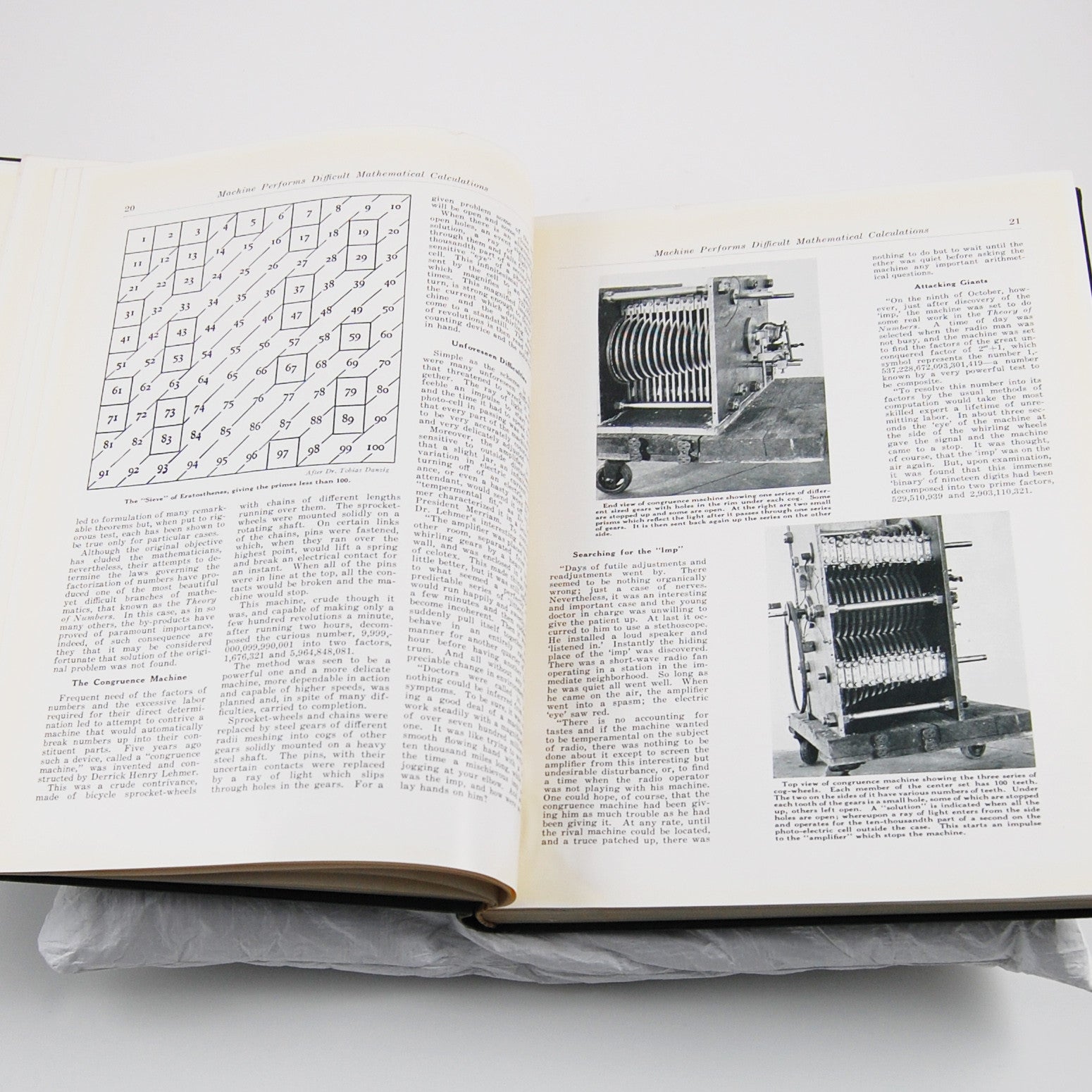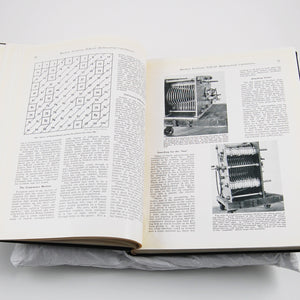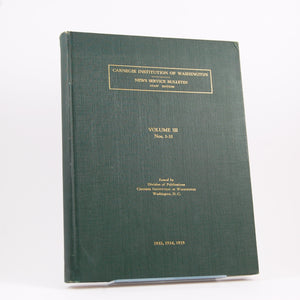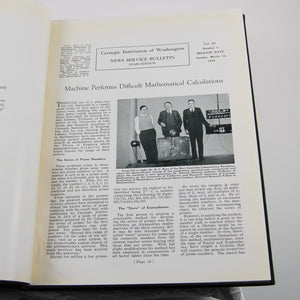Lehmer, Derrick | "Machine Performs Difficult Mathematical Calculations"
£100.00
-
First edition, staff issue. The present volume collects three years of Carnegie Institution News Service Bulletins (1933-1935), including articles and scientific papers on a variety of subjects researched by Carnegie staff members around the world (this is the staff edition, as opposed to the press and school editions, which do not include the "Notes on Institution Affairs").
The key article in this volume is "Machine Performs Difficult Mathematical Calculations", an account of the "Congruence Machine" (now known as a Lehmer sieve) developed to determine prime numbers by University of California mathematician Derrick Norman Lehmer (1867-1938). Determining which numbers are prime is a key problem in mathematics, and Lehmer made his name in 1914 by completing the series of primes up to 10 million. The first Lehmer sieve was constructed by Lehmer and his son Derrick Henry in 1926, using bicycle chains and metal rods that closed an electrical circuit when a solution to a factorization problem was found. In 1932 they completed a more advanced device utilizing gears and light beams, which is detailed in the present article. Lehmer sieves were an important early type of mechanical calculator, and the basic concept is still used for mathematical sieves in modern software.
With the ownership inscription of renowned seismologist Hugo Benioff, known for the innovative seismographs he developed, as well as his work charting the locations of deep earthquakes in the Pacific seabed.
- ...[in] in Carnegie Institution of Washington News Service Bulletin Staff Edition Volume III, Nos. 1-31. Washington D. C.: Carnegie Institution, 1933-35. Tall quarto. Original green cloth, titles to upper board gilt. Illustrations throughout. Upper corner bumped, a little dampstain to tail of spine slightly affecting contents, minor rubbing at extremities, margins of contents toned. A very good copy.






